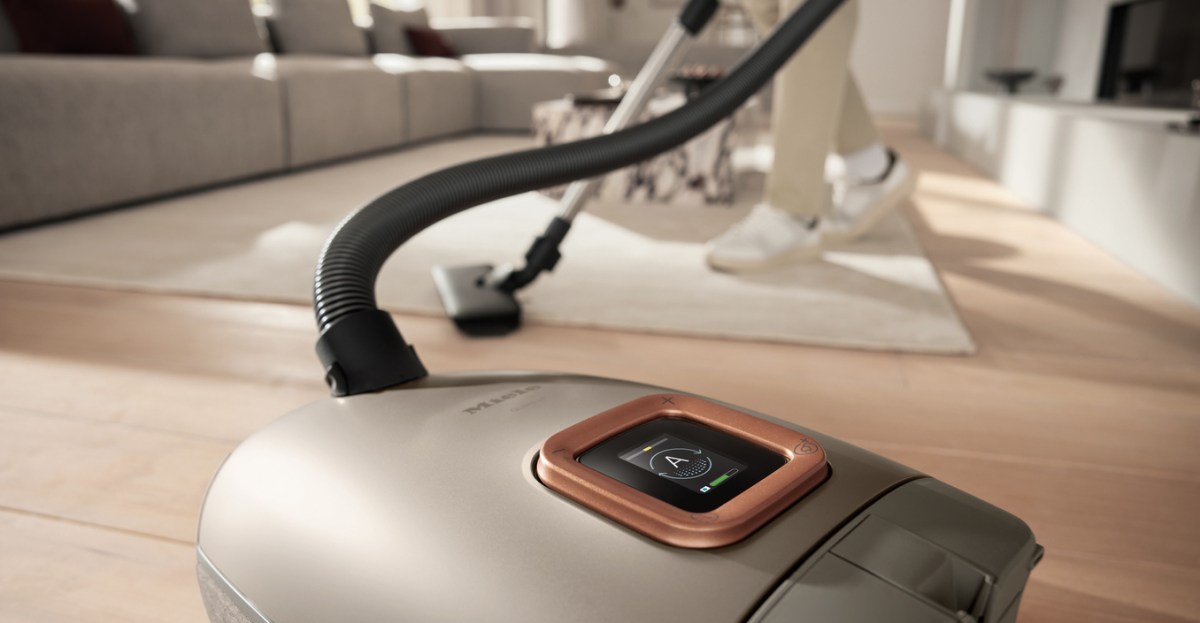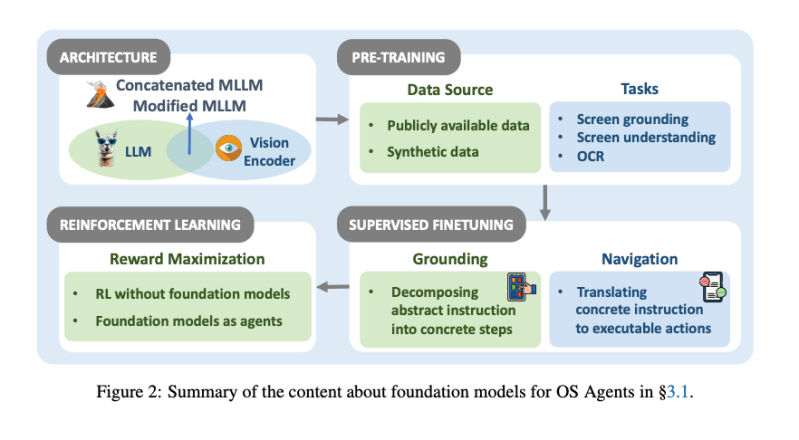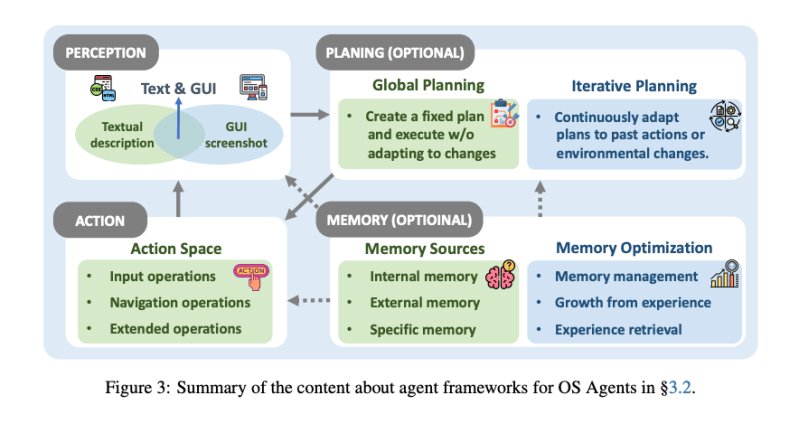- Mitochondria-Targeted Receptor Counters Neurodegeneration in Mice Genetic Engineering and Biotechnology News
- reverses pharmacological and neurodegenerative cognitive impairment in mice Nature
- Study establishes a causal link between mitochondrial dysfunction and neurodegenerative diseases News-Medical
- Mitochondrial dysfunction linked to Alzheimer’s onset and treatment response Mayo Clinic News Network
- Mitochondrial boost reverses dementia symptoms in mice ScienceBlog.com
Blog
-
Mitochondria-Targeted Receptor Counters Neurodegeneration in Mice – Genetic Engineering and Biotechnology News
-

Meteorite Crashes Into Georgia Home, Turns Out to Be 20 Million Years Older Than Earth
On a clear June day in Georgia, a blazing fireball suddenly fell out of the sky over the Atlanta metro area. The source of this spectacle was a 1-ton meteor that exploded in mid-air, sending a cherry tomato-sized fragment shooting through the roof of a McDonough home.
Though no one knew it then, this space rock hailed from a time long before Earth had even formed. Using optical and electron microscopes, geologists at the University of Georgia analyzed 0.8 ounces (23 grams) of fragments recovered from the piece that ripped through the house on June 26. Their study revealed that this meteor was likely over 4.56 billion years old. That’s 20 million years older than our planet.
“This particular meteor that entered the atmosphere has a long history before it made it to the ground of McDonough, and in order to totally understand that, we actually have to examine what the rock is and determine what group of asteroids it belongs to,” Scott Harris, a University of Georgia geology researcher, said in a release.
Harris and his colleagues extrapolated the meteor’s age by classifying the recovered fragments. The composition of the debris indicated it came from a low-metal ordinary chondrite, a group of asteroids in the main belt between Mars and Jupiter. Experts believe they stem from a breakup of a much larger asteroid that occurred about 470 million years ago, Harris explained. As these meteors orbit the Sun, they occasionally cross through Earth’s orbit, he said.
That’s what allowed this interloper to pierce through Earth’s atmosphere and ultimately an unsuspecting Georgian’s home. According to the UGA release, researchers clocked the meteor entering the atmosphere at cosmic velocity, which is faster than the speed of sound. Indeed, people widely reported sonic booms along the ground track of the fireball, which traveled from northeast to southwest to the site of its crash landing, NASA’s Meteoroid Environment Office states.
The 3-foot-wide (1-meter-wide) meteor disintegrated—or blew up—27 miles above Wake Forest, Georgia, unleashing a blast of energy equivalent to roughly 20 tons of TNT, according to NASA’s All Sky Fireball Network. When a pebble-sized fragment punched through a McDonough man’s roof, Harris suspects he heard three things at once.
“One was the collision with his roof, one was a tiny cone of a sonic boom, and a third was it impacting the floor all in the same moment,” he said. “There was enough energy when it hit the floor that it pulverized part of the material down to literal dust fragments. The resident told Harris he’s still finding space dust around his living room, according to the release.
The cherry tomato-sized meteorite, officially named the McDonough meteorite, is the 27th recovered in Georgia in history and only the sixth documented fall. “This is something that used to be expected once every few decades and not multiple times within 20 years,” Harris said. “Modern technology in addition to an attentive public is going to help us recover more and more meteorites.”
The McDonough meteorite will remain at UGA for further analysis, and Harris plans to publish a paper on its composition, speed, and dynamics. These details will help scientists understand the potential threat of larger and more dangerous asteroid impacts. “One day there will be an opportunity, and we never know when it’s going to be, for something large to hit and create a catastrophic situation. If we can guard against that, we want to,” Harris said.
Continue Reading
-

Three hours? Check. Third-set tiebreak? Check. Sabalenka outlasts Raducanu
When Aryna Sabalenka and Emma Raducanu arrived at the first-set tiebreak on Monday at the Cincinnati Open, recent history said it was all but over. Indeed, Sabalenka won six of the first seven points, punctuated by back-to-back aces, and eventually converted her third set point.
She improved to 11-0 in first-set tiebreaks this year, more compelling evidence that what was once a liability has become her greatest strength. That flourish sent her on the way to a rousing and remarkable 7-6 (3), 4-6, 7-6 (5) victory over a tenacious Raducanu.
The dramatic match required three hours and nine minutes.
“Happy to get through this match,” Sabalenka said in her on-court interview. “I really hope I have a day tomorrow.”
Sabalenka was routinely frustrated, but in the end she was fearless. She has won a remarkable 18 of 19 tiebreaks this year. She finished with 46 winners — and 72 unforced errors. Sabalenka will play a Round of 16 match Wednesday against Jessica Bouzas Maneiro, a 6-4, 6-1 winner over wild card Taylor Townsend.
How on-point is Sabalenka under pressure?
Those 18 tiebreak wins in 2025, according to the statisticians, is already the highest tally in a single calendar year in the Open Era.
Sabalenka has now won all three career matches against Raducanu, all in the past 18 months. She’s now won 49 matches and put in more time on court (approaching 100 hours) than any other Hologic WTA Tour player.
Raducanu showed some terrific fight, but has now lost 11 of 12 matches against PIF WTA Rankings Top 5 players. She’s currently working with Francisco Roig, who coached Rafael Nadal 2005-22. Roig was extremely engaged during the match, clapping and offering specific observations — almost always punctuated with an encouraging “Vamos!”
Raducanu opened the match by winning eight straight points. The ninth, though, was a self-inflicted double fault, and signaled a shift in momentum. Sabalenka promptly broke her to get it back on serve.
After dropping four straight games, Raducanu held serve to make it 4-3. Thirty minutes into the match, after a backhand error from Sabalenka, Raducanu leveled it at 4-all. Saving two break points, Raducanu held for a 5-4 lead.
Serving at 5-all, Raducanu played her best game, finishing it with a massive crosscourt forehand winner and an ace. Sabalenka also won at love and they were into that fateful tiebreak.
The second set sailed along on keel for six games — until Raducanu earned three break points and converted the last one. It was the only break registered in the second set and Raducanu closed it with an emphatic ace.
It was the first set she’s ever won against Sabalenka.
The third set opened with seven consecutive relatively easy service holds. The eight game was a match within itself. There were 13 deuces and Raducanu saved four break points before hitting a first serve that, finally, Sabalenka couldn’t get back.
After that, Raducanu roared and turned to her box with a raised, clenched fist.
In perhaps her best match since winning the US Open, Raducanu won more points than Sabalenka, 125-122.
There were no breaks in the third set, and Sabalenka finished it with another virtuoso performance.
Continue Reading
-

Kylie Jenner gushes over intimate birthday surprise from Kendall
Kylie Jenner receives sweet birthday celebration from sister Kendall Kylie Jenner’s 28th birthday was celebrated by her sister, Kendall.
The reality star received multiple birthday tributes from her large family to mark the day with an intimate party, ditching the luxurious choices other celebrities opt for.
Kendall, the birthday girl’s 29-year-old sister, set up an elegant table for the al fresco meal, with white table clothes, decorated with candles, flowers and fresh tomatoes.
The Mediterranean buffet included a simple arugula and tomato salad, stuffed peppers, olives, pita bread, cucumber salad, couscous as well as more.
“Best birthday ever!!!!!!! I’m so grateful to my family and friends for making this weekend so special and full of love. 28 feels so good!!!!!” she captioned the carousel of images featuring moments from the party.
Expressing gratitude to her sister, Kylie further wrote, “To my sister Kendal Jenner thank you from the bottom of my heart for planning everything so perfectly. I’m so lucky to have you.”
During the celebration, Kylie and her friends enjoyed a cake covered with fresh raspberries, roses and daisies.
As the beauty mogul blew out the candles, a video that was captured by her sister, Kendall, her close pal Hailey Bieber and her husband, Justine Bieber, could be seen, as the Rhode owner captured memories on her phone.
Earlier in the day, Kylie had a sweet gathering with her kids and friends as they enjoyed homemade pie loaded with sprinkles, gummy candies.
Continue Reading
-

Buy New Crocs Classic Unfurgettable Clog
If you purchase an independently reviewed product or service through a link on our website, The Hollywood Reporter may receive an affiliate commission.
Crocs have always been comfy, but now they’re cozy, too.
The cult-favorite footwear brand has tapped Millie Bobby Brown as global ambassador and the face of its new Surrey Hills-set campaign, highlighting the brand’s latest drop: the Classic Unfurgettable Clog. The fresh silhouette combines the versatility of Crocs’ Classic Lined Clog with the unmatched comfort of Crocs’ Classic Cozzzy Slipper.
Crocs Classic Unfurgettable Clog
Shot by Lillie Eiger, the photographs capture the elevated styling potential for the brand’s newest release. Brown models the Unfurgettable Clog‘s Mushroom and Quartz colorways, but the fuzzy footwear is available in three additional hues as well: Black, Vanilla and Milk Chocolate. Each of the five varieties retails for $59.99 and comes in both women’s and men’s sizes.
In the campaign imagery, Brown explores her bold and whimsical style by adorning her clogs with an assortment of playful Jibbitz charms. The Unfurgettable Clogs can hold eight total Jibbitz in the holes along their faux fur backstraps.

Crocs Meta Double Daisy Mini Chain Jibbitz
In addition to unveiling the Unfurgettable Clog, Crocs has dropped fresh colorways in other popular fleece and fuzz-lined shoes: the Classic Lined Clog ($44.99-$59.99), Classic Cozzzy Slipper ($39.99-$49.99) and Classic Cozzzy Luxe Slipper ($54.99).

Crocs Classic Cozzzy Slipper
The Millie Bobby Brown ambassadorship announcement comes on the heels of the Lola Tung x Crocs campaign, the brand’s crossover with The Summer I Turned Pretty star, in which she models the Classic Crafted Clog.
Related: This Season’s “It” Shoe Fuses Last Summer’s Top Two Footwear Trends
Shop the Classic Unfurgettable Clog along with the new colorways of the Classic Lined Clog, Classic Cozzzy Slipper and Classic Cozzzy Luxe Slipper now at crocs.com and through Crocs retailers and wholesalers globally. For more inspiration, check out the special Unfurgettable Jibbitz curation.
Continue Reading
-

Even the lowly canister vacuum now wants access to your Wi-Fi network
The Miele Guard L1 Electro is available now for $1,499 making it the most expensive model in the company’s L1 lineup and considerably pricier than even the $380 canister vacuum that Dyson still sells. That seems like a lot for a vacuum that still has a power cord, but the Electro does offer additional functionality including a built-in LCD touchscreen for changing the vacuum’s cleaning mode. The screen also displays status messages letting you know when the filter or vacuum bag needs replacing, or if a clog is detected.
The Electro connects to Miele’s mobile app over Wi-Fi giving you another option for staying on top of those important status messages. And should it be time to replace bags or filters, you can conveniently order them directly through the app.
Continue Reading
-

These 10 States Could See Aurora Borealis Monday
Topline
The majority of states along the U.S.-Canada border could have a shot at seeing the northern lights Monday night, according to the National Oceanic and Atmospheric Administration, which issued a similarly strong forecast for Tuesday night.
NOAA issued a Kp index of four for Monday night. (Photo by Lance King/Getty Images)
Getty Images
Key Facts
A Kp index of four was issued by NOAA for Monday night, meaning the aurora borealis “can be quite pleasing to look at” for people in the right areas.
Monday’s curved viewing line stretches as far down as central South Dakota, with chances of seeing the northern lights increasing the further north viewers are from the line.
Northern lights viewers will have another shot at seeing the natural phenomenon on Tuesday, when a Kp index of four is also forecast alongside a viewing line identical to Monday’s.
Get Forbes Breaking News Text Alerts: We’re launching text message alerts so you’ll always know the biggest stories shaping the day’s headlines. Text “Alerts” to (201) 335-0739 or sign up here.
Where Will The Northern Lights Be Visible?
Monday’s viewing line includes Alaska, northern Washington, northern Idaho, most of Montana, all of North Dakota, the upper half of South Dakota, most of Minnesota, the Michigan Upper Peninsula, the northern half of the Michigan Lower Peninsula and northern Maine.
Monday’s viewing line.
NOAA
What’s The Best Way To See The Northern Lights?
The window of time between 10 p.m. and 2 a.m. usually provides viewers with their best chance at seeing the northern lights. Areas with little to no light pollution, as well as high vantage points, can increase the likelihood of seeing the aurora borealis.
What’s The Best Way To Photograph The Northern Lights?
Night mode and no flash should be used for those trying to snap a photo of the lights on their smartphones. Traditional cameras should be equipped with wide-angle lenses and low apertures while shooting the northern lights. Tripods can help smartphones and cameras with stability.
Key Background
Auroral activity has been above-average through much of 2024 and 2025. The increased activity comes from the sun reaching the peak of its 11-year solar cycle, generating coronal mass ejections and solar flares that often lead to northern lights showings. While the summer has brought some decent showings, winter months are typically the best time to view the northern lights due to longer and darker nights.
Continue Reading
-

Study warns of security risks as ‘OS agents’ gain control of computers and phones
Want smarter insights in your inbox? Sign up for our weekly newsletters to get only what matters to enterprise AI, data, and security leaders. Subscribe Now
Researchers have published the most comprehensive survey to date of so-called “OS Agents” — artificial intelligence systems that can autonomously control computers, mobile phones and web browsers by directly interacting with their interfaces. The 30-page academic review, accepted for publication at the prestigious Association for Computational Linguistics conference, maps a rapidly evolving field that has attracted billions in investment from major technology companies.
“The dream to create AI assistants as capable and versatile as the fictional J.A.R.V.I.S from Iron Man has long captivated imaginations,” the researchers write. “With the evolution of (multimodal) large language models ((M)LLMs), this dream is closer to reality.”
The survey, led by researchers from Zhejiang University and OPPO AI Center, comes as major technology companies race to deploy AI agents that can perform complex digital tasks. OpenAI recently launched “Operator,” Anthropic released “Computer Use,” Apple introduced enhanced AI capabilities in “Apple Intelligence,” and Google unveiled “Project Mariner” — all systems designed to automate computer interactions.
OS agents work by observing computer screens and system data, then executing actions like clicks and swipes across mobile, desktop and web platforms. The systems must understand interfaces, plan multi-step tasks and translate those plans into executable code. (Credit: GitHub) Tech giants rush to deploy AI that controls your desktop
The speed at which academic research has transformed into consumer-ready products is unprecedented, even by Silicon Valley standards. The survey reveals a research explosion: over 60 foundation models and 50 agent frameworks developed specifically for computer control, with publication rates accelerating dramatically since 2023.
AI Scaling Hits Its Limits
Power caps, rising token costs, and inference delays are reshaping enterprise AI. Join our exclusive salon to discover how top teams are:
- Turning energy into a strategic advantage
- Architecting efficient inference for real throughput gains
- Unlocking competitive ROI with sustainable AI systems
Secure your spot to stay ahead: https://bit.ly/4mwGngO
This isn’t just incremental progress. We’re witnessing the emergence of AI systems that can genuinely understand and manipulate the digital world the way humans do. Current systems work by taking screenshots of computer screens, using advanced computer vision to understand what’s displayed, then executing precise actions like clicking buttons, filling forms, and navigating between applications.
“OS Agents can complete tasks autonomously and have the potential to significantly enhance the lives of billions of users worldwide,” the researchers note. “Imagine a world where tasks such as online shopping, travel arrangements booking, and other daily activities could be seamlessly performed by these agents.”
The most sophisticated systems can handle complex multi-step workflows that span different applications — booking a restaurant reservation, then automatically adding it to your calendar, then setting a reminder to leave early for traffic. What took humans minutes of clicking and typing can now happen in seconds, without human intervention.

The development of AI agents requires a complex training pipeline that combines multiple approaches, from initial pre-training on screen data to reinforcement learning that optimizes performance through trial and error. (Credit: arxiv.org) Why security experts are sounding alarms about AI-controlled corporate systems
For enterprise technology leaders, the promise of productivity gains comes with a sobering reality: these systems represent an entirely new attack surface that most organizations aren’t prepared to defend.
The researchers dedicate substantial attention to what they diplomatically term “safety and privacy” concerns, but the implications are more alarming than their academic language suggests. “OS Agents are confronted with these risks, especially considering its wide applications on personal devices with user data,” they write.
The attack methods they document read like a cybersecurity nightmare. “Web Indirect Prompt Injection” allows malicious actors to embed hidden instructions in web pages that can hijack an AI agent’s behavior. Even more concerning are “environmental injection attacks” where seemingly innocuous web content can trick agents into stealing user data or performing unauthorized actions.
Consider the implications: an AI agent with access to your corporate email, financial systems, and customer databases could be manipulated by a carefully crafted web page to exfiltrate sensitive information. Traditional security models, built around human users who can spot obvious phishing attempts, break down when the “user” is an AI system that processes information differently.
The survey reveals a concerning gap in preparedness. While general security frameworks exist for AI agents, “studies on defenses specific to OS Agents remain limited.” This isn’t just an academic concern — it’s an immediate challenge for any organization considering deployment of these systems.
The reality check: Current AI agents still struggle with complex digital tasks
Despite the hype surrounding these systems, the survey’s analysis of performance benchmarks reveals significant limitations that temper expectations for immediate widespread adoption.
Success rates vary dramatically across different tasks and platforms. Some commercial systems achieve success rates above 50% on certain benchmarks — impressive for a nascent technology — but struggle with others. The researchers categorize evaluation tasks into three types: basic “GUI grounding” (understanding interface elements), “information retrieval” (finding and extracting data), and complex “agentic tasks” (multi-step autonomous operations).
The pattern is telling: current systems excel at simple, well-defined tasks but falter when faced with the kind of complex, context-dependent workflows that define much of modern knowledge work. They can reliably click a specific button or fill out a standard form, but struggle with tasks that require sustained reasoning or adaptation to unexpected interface changes.
This performance gap explains why early deployments focus on narrow, high-volume tasks rather than general-purpose automation. The technology isn’t yet ready to replace human judgment in complex scenarios, but it’s increasingly capable of handling routine digital busywork.

OS agents rely on interconnected systems for perception, planning, memory and action execution. The complexity of coordinating these components helps explain why current systems still struggle with sophisticated tasks. (Credit: arxiv.org) What happens when AI agents learn to customize themselves for every user
Perhaps the most intriguing — and potentially transformative — challenge identified in the survey involves what researchers call “personalization and self-evolution.” Unlike today’s stateless AI assistants that treat every interaction as independent, future OS agents will need to learn from user interactions and adapt to individual preferences over time.
“Developing personalized OS Agents has been a long-standing goal in AI research,” the authors write. “A personal assistant is expected to continuously adapt and provide enhanced experiences based on individual user preferences.”
This capability could fundamentally change how we interact with technology. Imagine an AI agent that learns your email writing style, understands your calendar preferences, knows which restaurants you prefer, and can make increasingly sophisticated decisions on your behalf. The potential productivity gains are enormous, but so are the privacy implications.
The technical challenges are substantial. The survey points to the need for better multimodal memory systems that can handle not just text but images and voice, presenting “significant challenges” for current technology. How do you build a system that remembers your preferences without creating a comprehensive surveillance record of your digital life?
For technology executives evaluating these systems, this personalization challenge represents both the greatest opportunity and the largest risk. The organizations that solve it first will gain significant competitive advantages, but the privacy and security implications could be severe if handled poorly.
The race to build AI assistants that can truly operate like human users is intensifying rapidly. While fundamental challenges around security, reliability, and personalization remain unsolved, the trajectory is clear. The researchers maintain an open-source repository tracking developments, acknowledging that “OS Agents are still in their early stages of development” with “rapid advancements that continue to introduce novel methodologies and applications.”
The question isn’t whether AI agents will transform how we interact with computers — it’s whether we’ll be ready for the consequences when they do. The window for getting the security and privacy frameworks right is narrowing as quickly as the technology is advancing.
Continue Reading
-

Scientists Design Huge Spacecraft That Could Carry 2,400 Colonists to Alpha Centauri
A team of engineers has come up with designs of a 36-mile spacecraft, dubbed Chrysalis, designed to carry up to 2,400 passengers to Alpha Centauri, the closest star system to our own.
As first spotted by Live Science, the ambitious vision recently won the team the top prize at the Project Hyperion Design Competition, which was launched last year by an international consortium of scientists, engineers, and urban planners.
Unsurprisingly, Chrysalis sounds like it was yanked straight out of a sci-fi novel. The hypothetical habitat generates Earth-like gravity by constantly rotating around its own axis, as laid out in a project brief. Several onion-like layers include dwellings and gardens for inhabitants, warehouses, food production and ecosystems, and communal spaces.
Each of these shells is powered by nuclear fusion reactors — which, it’s fair to point out, is tech that hasn’t been yet been made practical by anybody here on Earth.
Chrysalis is made up of several stages, each of which is a “fully autonomous and complete” habitat.
The layer closest to the core was designed to provide space for plants, microbes, livestock, and other mechanisms of food production. Various environments allow biodiversity to continue, including tropical and boreal forests.
The second layer houses communal spaces, and the third holds “3D-printed dwelling modules.” The outermost shell serves as a warehouse for machinery, equipment, and other types of resources.
A “Cosmos Dome,” 426 feet in height and 1,180 feet in diameter, provides a controlled, zero-gravity environment, as well as thermal insulation and shielding from deep space radiation.
It’s also the only place where inhabitants can gaze at the universe outside, while freely and safely floating around in weightlessness.
“Through the transparent panels of the dome, the inhabitants will be able to observe the universe to the rear of the spaceship,” the brief reads.
Since Chrysalis is a generational ship, the goal is to give both male and female inhabitants a three-year window between the ages of 28 and 31 to reproduce. There’s a two-child limit for each inhabitant, “not necessarily with the same partner,” according to the brief.
The goal is to maintain a “stable population” of roughly 1,500 individuals over three generations.
An artificial intelligence would allow for “resilience of the whole social system, better knowledge transfer between the different generations of inhabitants and a deeper vision of the overall dynamics of the Chrysalis spaceship complex,” the pitch reads.
While it’s a fascinating and detailed vision of an exciting, multi-generational journey to a different star system, Chrysalis is still firmly in the realm of science fiction.
Beyond the pesky issue of nuclear fusion not yet existing in a practical form, the manufacturing processes required to build a tens-of-miles structure in zero gravity far surpass anything humanity has accomplished yet. We haven’t even fully explored the concept of artificial gravity with the help of a centrifuge.
But that doesn’t mean we shouldn’t explore the concept — especially in the face of various potential disasters that could threaten humanity’s future on Earth.
More on generational ships: Researchers Plotting Giant Spaceship That Could Carry Generations of Humans
Continue Reading
-

CDC Announces New Campaign Targeting Substance Abuse and Mental Health in Young Adults
The CDC’s new campaign aims to resolve the ongoing drug overdose crisis in America.
Stock.adobe.comMore than 80,000 Americans died from drug overdoses in 2024. Younger demographics have seen the worst effects of this along with mental health concerns, poor mental health reports amongst teens and adolescents are rising over the nation and highlighting the two largest concerns surrounding the youth population.
The Centers for Disease Control and Prevention (CDC) launched a new national campaign “Free Mind.” This campaign aims to provide young adults aged 12-17 and their parents & caregivers with the resources and educational information surrounding mental health, and substance abuse issues.
Young Americans are facing one of the most lethal drug epidemics in recent memory, with the main culprit being illegally produced fentanyl. An estimated 75% of reported drug overdoses from 2020 to 2024 were directly linked to the illegally manufactured drug. Overdose casualties are not the only concern amongst today’s youth as mental health problems are on the rise, with reports of day-to-day lifestyle impacts on teens. The beginning of this mental health dilemma traces back to 2023, were data shows that 40% of high school students suddenly ceased their standard daily routines, citing feelings of depression and despair. These negative mindsets affect young adults in a variety of ways, but the most concerning is self-harm.
Being in a negative mindset can led to poor and sometimes dangerous decisions, especially in adolescents suffering from poor mental health. Recent data suggests that one in five high school students will have a serious attempt of suicide, showing the deadly turn untreated mental health can take. The correlation between drug overdose and mental health in the youth community have started to blend, with both issues adversely affecting one another.
Dr. Allison Arwady, director of the CDC national center for injury prevention and control touched on the effects of substance abuse and bad mental health on young adults, saying, “Teens may use alcohol and other substances to cope with stress, anxiety, and depression. Talking openly about mental health and substance use, and knowing when to get professional help, is critical to helping teens stay healthy. That’s why this campaign supports youth, parents, and caregivers in having those conversations early, before an issue arises.”1
To assist in establishing its new campaign, the CDC reached out to youth groups regarding the community’s knowledge around substance abuse, aiming to use this to produce branding and messages that resonate with younger audiences. Free Mind will provide educational support covering the connection between bad mental health and drug abuse, while also touching on associated risk factors of substance abuse, and strategies for young adults to provide protection from drug use. The new campaign will also offer parents and caregivers the resources to assist and inform their child on the importance of mental health and staying safe from drug abuse.
- CDC Launches New Campaign to Address Youth Substance Use and Mental Health The Centers for Disease Control and Prevention August 7, 2025 https://www.prnewswire.com/news-releases/cdc-launches-new-campaign-to-address-youth-substance-use-and-mental-health-302524817.html
Continue Reading
